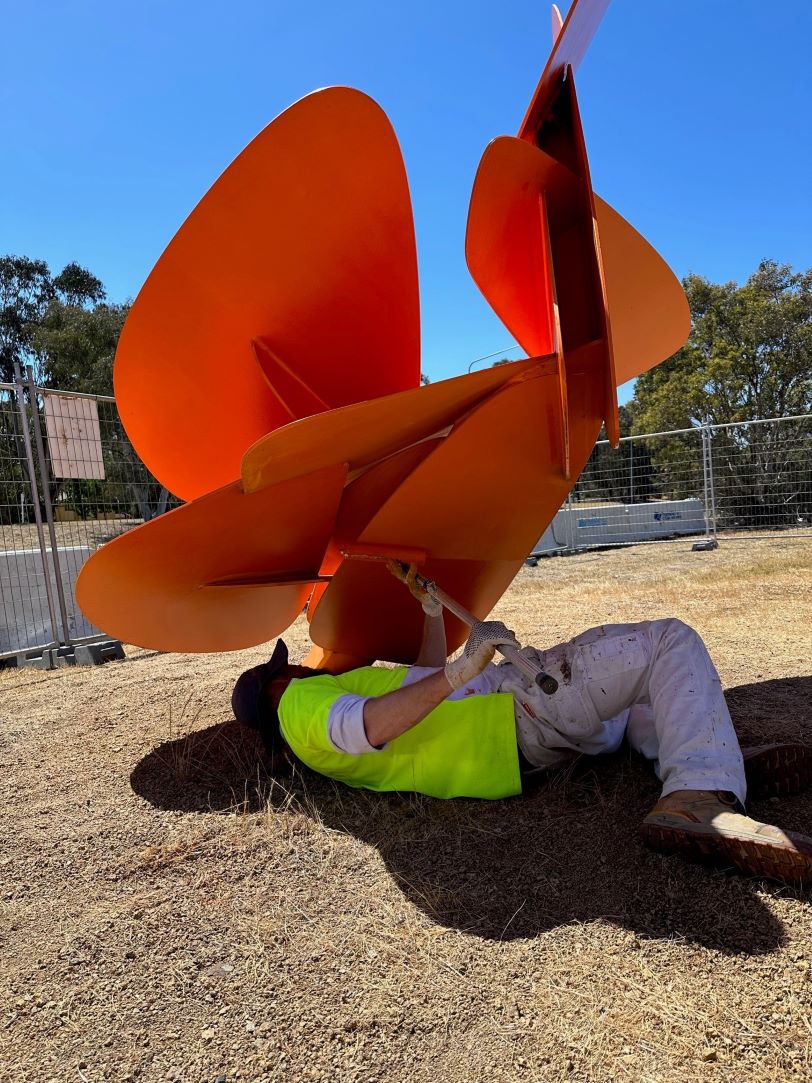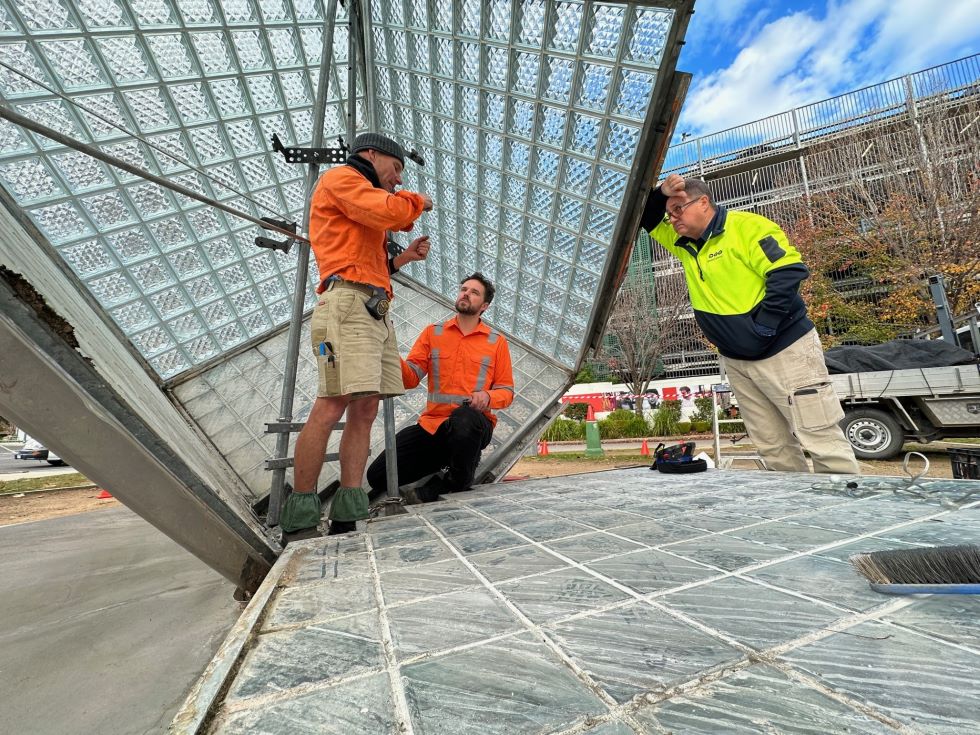If you commute along Drakeford Drive you may notice painters putting a fresh lick of orange paint on Moths Ascending the Capital, one of 114 public art pieces in Canberra collectively worth $19 million.
The ACT Government, on our behalf, has been collecting art for our public spaces for 60 years and it comes with an annual repair and maintenance budget of $165,000.

Moths Ascending the Capital (by artist Alexander Knox) hasn’t had a touch-up of clear coat for 12 years, so, after relentless UV exposure under Tuggeranong’s clear blue skies, a new coat of paint was due.
Next on the maintenance list is a technological overhaul of that iconic, light-flashing Canberra institution, Illumicube, by artist Kerry Simpson (at the back of the Canberra Centre).
Canberrans may recall that the coloured lights used to change in response to sound but the sensor was de-activated years ago to stop the cacophony of car horns late at night.
But cheer up, Canberrans! Illumicube is about to get some new LED lighting that will be programmable, rather than just random flashing lights.
The high-tech, flashy Illumicube was designed to commemorate 25 years of electricity supply in Canberra (exciting stuff) but the lights inside are just old, used traffic lights.
artsACT Project officer for public art, Angie McDuff, said the technology back in 1988 “was pretty cutting edge for that time”.
“We’re building a new interior structure for that work that will house some new LED lighting that will be programmable,” Angie said. “It won’t be sensored, but we will be able to have more interaction with it.”

An interesting anecdote that accompanies the old, sound-activated Illumicube: apparently it was occasionally used for children with non-verbal autism to encourage them to vocalise in order to activate the lights.
Down the road from Illumicube is easily the most high-maintenance sculpture in Canberra’s public art collection – the painted doll and carousel dogs called The Other Side of Midnight (by artist Anne Ross). With kids climbing over it daily with sticky hands, it’s a conservator’s nightmare.
“That ends up with ice cream spilt on it and black school shoe scuff marks that we’re constantly clearing off,” Angie said.
One public artwork that doesn’t invite the public to engage with it but still invites a lot of public engagement, is Belconnen’s Owl by artist Bruce Armstrong. Its phallic appearance once attracted a lot of “colourful” graffiti but over time the novelty has worn off.
“That was just one person that kept vandalising the Belco owl and obviously thought it was funny and just kept doing it,” Angie said. “Once that person stopped we haven’t had any graffiti on that one in a long time. It did take a while, we really just had to wait for that person to move on and find something else to do.”
Two CCTV cameras have been installed for good measure.
Surprisingly, Canberra experiences hardly any vandalism of its public art – only seven instances last year. Perhaps we are a cultured bunch after all.
The role of public art is to humanise the built environment, and Canberra started its journey into public art in 1961, with Ethos, located outside the ACT Legislative Assembly. It was commissioned before self government and is the only heritage-listed work in Canberra’s public art collection.
“That is one that we pay a lot more attention to,” Angie said. “It was the first public commission for Canberra. It was partly crowd-sourced by the public. The Chamber of Commerce raised the money selling miniature versions of Ethos. People could purchase it for 50 pounds ($1,600 in today’s currency).”
There are also a couple of sculptures that the ACT Government didn’t commission but ended up adopting anyway. GIO stadium used to own the bronze statues of Mal Meninga (by artist Cathy Weiszmann) and Laurie Daley (by artist Peter Corlett) but artsACT took them on as assets earlier this year. Now Laurie Daley gets a wax regularly (along with Menzies, Curtin and Chifley).
“The amount of detail that goes into it – a local conservator was literally cleaning the teeth with the toothbrush,” Angie said.
So, what is the biggest wear-and-tear on our public art? Bird poo. It’s pigeons versus statues.
“One of the biggest jobs that we’ve had is Wide Brown Land at the Arboretum,” Angie said. “There was a family of magpies that used to sit on that and it did actually cause a lot of damage to the steel, leaving really bad staining on it. In 2017, we had to put an entire bird net over the whole work while we treated it and put a coating on it that would make it easier to clean.”
Canberra Daily is keen to hear from you about a story idea in the Canberra and surrounding region. Click here to submit a news tip.


